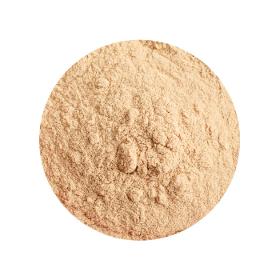- europages
- >
- COMPANIES - SUPPLIERS - SERVICE PROVIDERS
- >
- fruit tree growing
Results for
Fruit tree growing - Import export

VEHGRO B.V
Germany
"History and Origin Lucuma has been called the 'gold of the Incas'. Lucuma has been cultivated in the Peruvian highlands since 200 AD, when people discovered the caramel-sweet fruit. In Peru, 26 villages are named after this beloved fruit. The lucuma tree grows best at an altitude between 450 and 1000 metres. The tree can withstand drought well, but cannot withstand frost. High humidity is needed to produce the fruit. Lucuma trees only start producing fruit after 5 years and each tree produces up to 500 fruits per year. The fruits are yellow-brown in colour and can weigh up to one kilo each. Processing into Lucuma powder The lucuma tree bears fruit throughout the year, but the main harvest takes place in spring between January and April. When the fruit falls from the lucuma tree it is not yet ripe and the pulp is too hard to be edible. The fruit must be stored under hay until the bitter white latex breaks down and the pulp softens, but even when the fru…"
Request for a quote
VEHGRO B.V
Germany
"Baobab powder The baobab is the fruit of the baobab tree also called the Adansonia Digitata or monkey bread tree. The last name the tree owes to the many species of monkeys that live off the baobab fruits. The tree can grow very old and is the largest tree in Africa. Not only the fruit is useful for life in Africa. Almost all parts of the tree are useful so it is popularly called ""Tree of Life"". A nice example is that it uses its trunk as a water reservoir. During the rainy season, the monkey loaf tree provides sufficient reserves so that it can survive the dry periods. The tribe is then used by the population as a shop, cattle shed or bus shelter. The fruit has a very high antioxidant content. Baobab powder is also an excellent source of calcium and very rich in vitamins and minerals. After the fruit is processed into powder it consists for about 50% of fiber (pectin) which works as prebiotics. An extraordinary power food<…"
Request for a quote
GARNTEC GMBH
Germany
Binding yarns with wire inlay Julius Glatz was 1912 inventor of the vine binding yarn. Beside the original application the binding yarn is also approved within other ranges. It is easy to handle: a grip - a trick - the binding is finished. GarnTec binding yarns are manufactured from nature-brown or colored craft papers, which are wound around the wire. The binding yarns are pollution free and biologically degradable. They are available in diameters from 0,8 mm to 3,0 mm with wire inlay between 0,38 mm and 0,7 mm. Our yarns can be delivered in cut length from 10 to 60 cm, wounded on handy rolls or according to your wishes. Range of application: Material for binder purposes - in wine growing - in fruit growing - in tree nurseries - in nurseries - at florists - in the garden - in the household As binder material for vegetables (e.g. radishes, carrots, garlic, onions)
Request for a quoteDo you sell or make similar products?
Sign up to europages and have your products listed
Results for
Fruit tree growing - Import exportNumber of results
3 ProductsCompany type